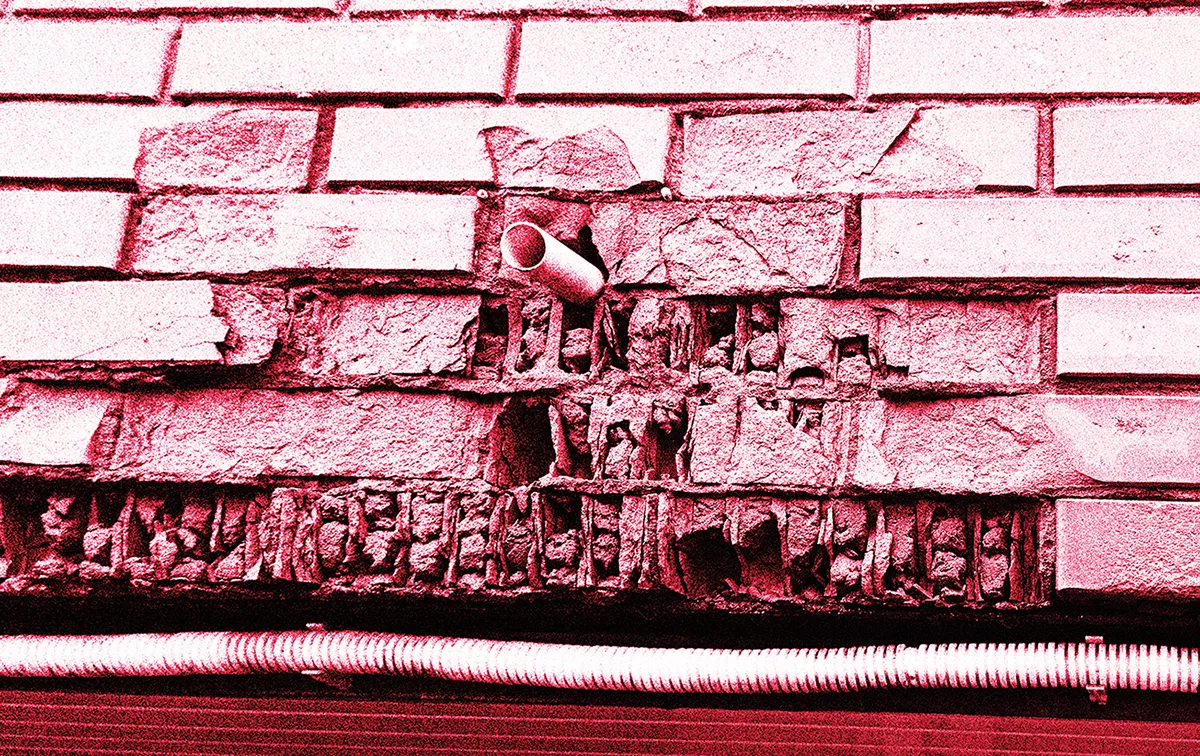
CPD: Patent and latent defects
By Anthony Walker FRICS MIFireE
In this CPD, published in this month’s Construction Management on behalf of the CIOB, Anthony Walker reviews the differences between patent and latent defects in buildings and how they impact contractors and clients. Click here to view original article.
“There are known knowns; there are things we know we know. We also know there are known unknowns; that is to say we know there are some things we do not know. But there are also unknown unknowns – the ones we don’t know we don’t know.”
Former US secretary of defence Donald Rumsfeld, 12 February 2002
The above quote encapsulates the concept of knowledge and uncertainty, particularly relevant in the complex world of construction defects. Despite meticulous planning and careful execution, defects can still occur, impacting a building’s quality, safety and longevity.
Understanding defects
It’s important to distinguish between two types of defects: patent and latent.Patent defects are readily observable ‘known’ flaws, visible to the naked eye or detectable through a routine inspection. A patent defect wouldn’t typically require any specialised equipment to be identified. Some examples include cracks in walls or floors, improperly installed windows or doors, water leaks, uneven floors or ceilings and missing or damaged materials.
In contrast, latent defects are hidden ‘unknown’ flaws – and potentially more complex and problematic. These are not immediately apparent and may take months or even years to become noticeable, sometimes manifesting only after significant damage.
They often require a more in-depth inspection, more specialised knowledge and sometimes testing to uncover. Some examples include insufficient foundations, under-strength materials, defective waterproofing, faulty wiring, leaking pipes and improperly installed roofing.
The impact of defects
Both types of defects pose problems, but in different ways:
- For contractors: Failure to address patent defects promptly can lead to delays, reputational damage and financial penalties. In some cases, legal action may be taken by the client seeking reimbursement for repairs or compensation for inconvenience.Latent defects tend to cause even greater issues since they are not immediately detectable, resulting in costly repairs and potential health hazards, potentially leading to disputes between contractors and clients over liability and responsibility for repairs.
For clients: Patent defects can be frustrating and inconvenient, requiring repairs that eat into budgets and disrupt planned schedules, but they are identifiable and can be addressed relatively easily.Latent defects, on the other hand, present a greater challenge, often needing expensive repairs due to structural instability or safety hazards, and may cause a significant decrease in the property’s value.
Understanding liability periods
The concept of a ‘latent defects liability period’ is crucial for understanding contractors’ responsibilities. This period, as set out in the Latent Damage Act 1986, is typically six years from the completion of a construction project, but it can be extended to 12 years if the contract was executed as a deed (a formal legal document).
The act also provides an additional three years in certain circumstances to claim for latent damage. Section 14B also imposes an overall long-stop date of 15 years from the breach of duty resulting in the damage.

A survey of the building’s exterior and interior can identify defects
Latent defect surveys
Building owners or managers are recommended to commission a latent defect survey before the liability period expires.
These surveys, typically carried out by a building surveyor, provide a comprehensive understanding of existing defects, their causes, necessary repairs and estimated costs. This information can be invaluable for future financial and legal discussions.
A typical latent defect survey involves:
- Reviewing building documents: Reviewing plans, specifications and warranties to understand the original design intent and materials used and identify any potential discrepancies with the current condition.
- Site survey: Conducting a thorough survey of the building’s interior and exterior to identify defects such as design, workmanship and materials.
- Identifying root causes: Determining the reason behind the defect, and what may have caused it.
- Prioritising risks: Assessing the severity of each defect and prioritising repairs based on urgency and potential damage.
- Cost estimation: Providing an estimated cost for repairs to facilitate informed decision-making.
- Negotiation leverage: If the defect falls within the contractor’s liability period, the survey report can serve as evidence for claiming compensation or repairs.
Additional advice from M&E surveyors, structural engineers or other specialists may be required for some surveys.
Legal considerations
Contractors are generally liable for both patent and latent defects within the defined time limitations.
If patent defects are not corrected, clients can seek compensation or engage other contractors for repairs at the original contractor’s expense.
For latent defects, proving contractor liability can be more challenging once the limitation period has expired. Clients must demonstrate that the defects were pre-existing to hold contractors accountable, which can require extensive evidence and legal support.
Conclusion
Understanding patent and latent defects is beneficial for all stakeholders in construction projects. By recognising the risks and taking proactive steps like latent defect surveys, potential legal and financial issues can be mitigated, while ensuring the safety and satisfaction of building occupants.
High-quality standards from contractors, and property inspection and maintenance from clients are key to minimising defects and creating reliable buildings for everyone.
Legislation and standards on defects
Several key pieces of legislation and guidance pertain to defects in the UK, including:
- Latent Damage Act 1986: This establishes time limits for bringing claims related to latent defects, providing clarity when clients can seek legal recourse for latent defects discovered after project completion.
- Limitation Act 1980: This sets out limitation periods. The starting point for measuring limitation periods is the date on which the cause of action accrues. In this context, ‘cause of action’ is simply a reference to the material facts that allow the claim to be made. For example, for a claim in a contract, the cause of action is the date on which the breach of contract occurs.
- Defective Premises Act (DPA) 1972: This imposes a duty of care on those involved in constructing or working on a dwelling. It is worth noting that the Building Safety Act has extended the liability period for claims under the DPA from six years to 15 years for claims for works completed after 28 June 2022 and to 30 years retrospectively for claims regarding works completed before 28 June 2022. Previously, this only covered claims related to new construction, but now it also covers claims relating to refurbishment and remedial works to existing properties.
- Building Regulations: These set standards for the design and construction of buildings to protect people’s safety, health and welfare in or about those buildings. They also set standards for accessibility, water use, energy use and security.
Click here to start the quiz.

By Anthony Walker
FRICS MIFireE, Director at Sircle
